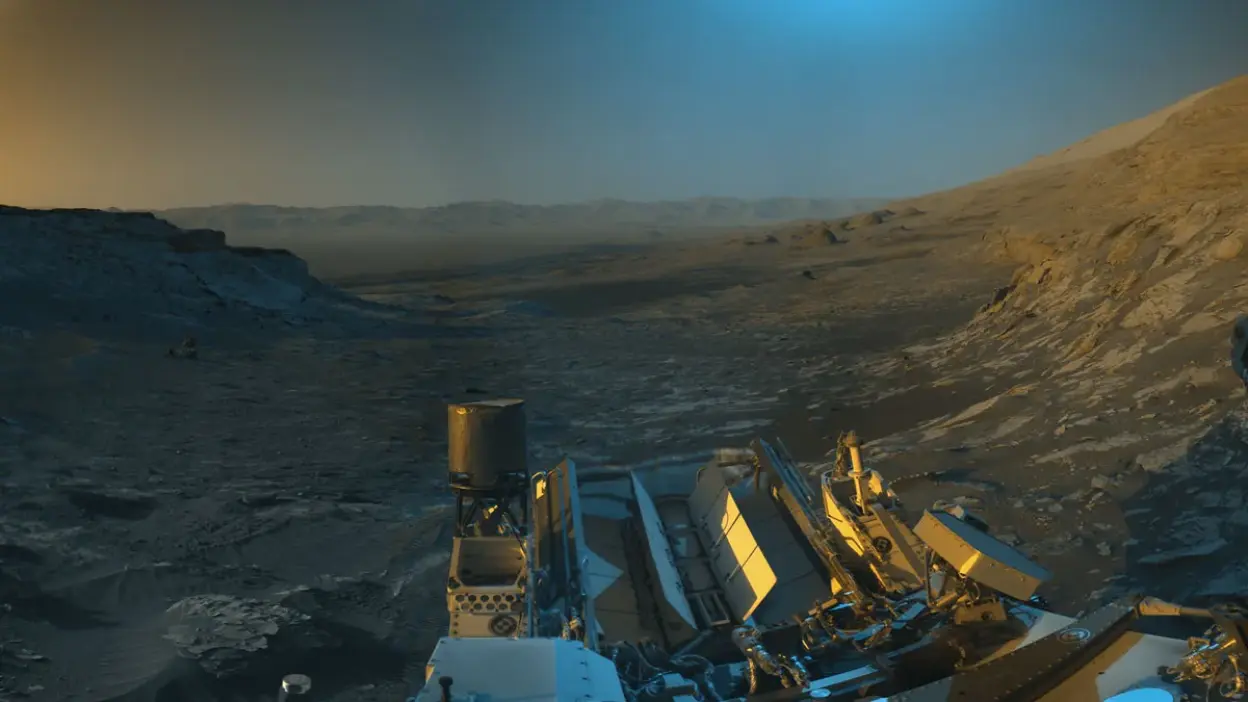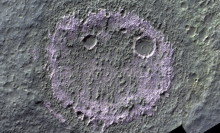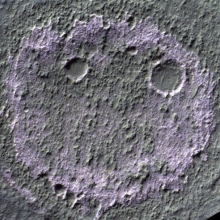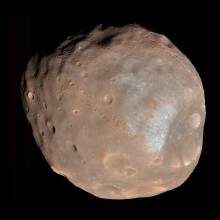Cold, dry, and barren: Mars doesn't look like it could be a haven for life — at least not the kind humans are familiar with.
Despite the Red Planet's appearance, scientists have wondered for decades about the possibility of microbial life inhabiting Mars in the distant past. Now a new study, based on data collected by NASA's Curiosity rover, is peeling back another layer of the mystery. For the first time, researchers measured the isotopic composition of carbon-rich minerals found in Gale Crater, a region laced with dried rivers and gullies and being explored by the rover.
The findings Curiosity beamed millions of miles back to Earth were not optimistic, at least in terms of the potential for life above ground.
"Our samples are not consistent with an ancient environment with life (biosphere) on the surface of Mars," said David Burtt, lead author of the study, in a statement, "although this does not rule out the possibility of an underground biosphere or a surface biosphere that began and ended before these carbonates formed."
The new paper, published in the National Proceedings of the National Academy of Sciences on Monday, suggests two possible ways carbon-rich minerals could have formed at Gale crater: a series of alternating wet and dry periods at the site or salty-ice conditions. These two different ancient climate scenarios could be summed up as bleak and bleaker when it comes to supporting life.

In an environment that swings like a pendulum from wet to dry, the region would intermittently shift from more habitable to less habitable, said Jennifer Stern, a co-author. In frigid temperatures near the planet's equator, the environment would be hostile for living things because most water would be frozen and inaccessible for chemistry or biology.
"And what is there is extremely salty and unpleasant for life," she added in a statement.
This isn't the first time scientists have theorized these possible climate scenarios for ancient Mars. Computer modeling of the planet, based on the presence of certain minerals and rock formations, have led scientists down this path before, but this is the first time they've had isotopic evidence from Martian rocks to bolster those ideas.
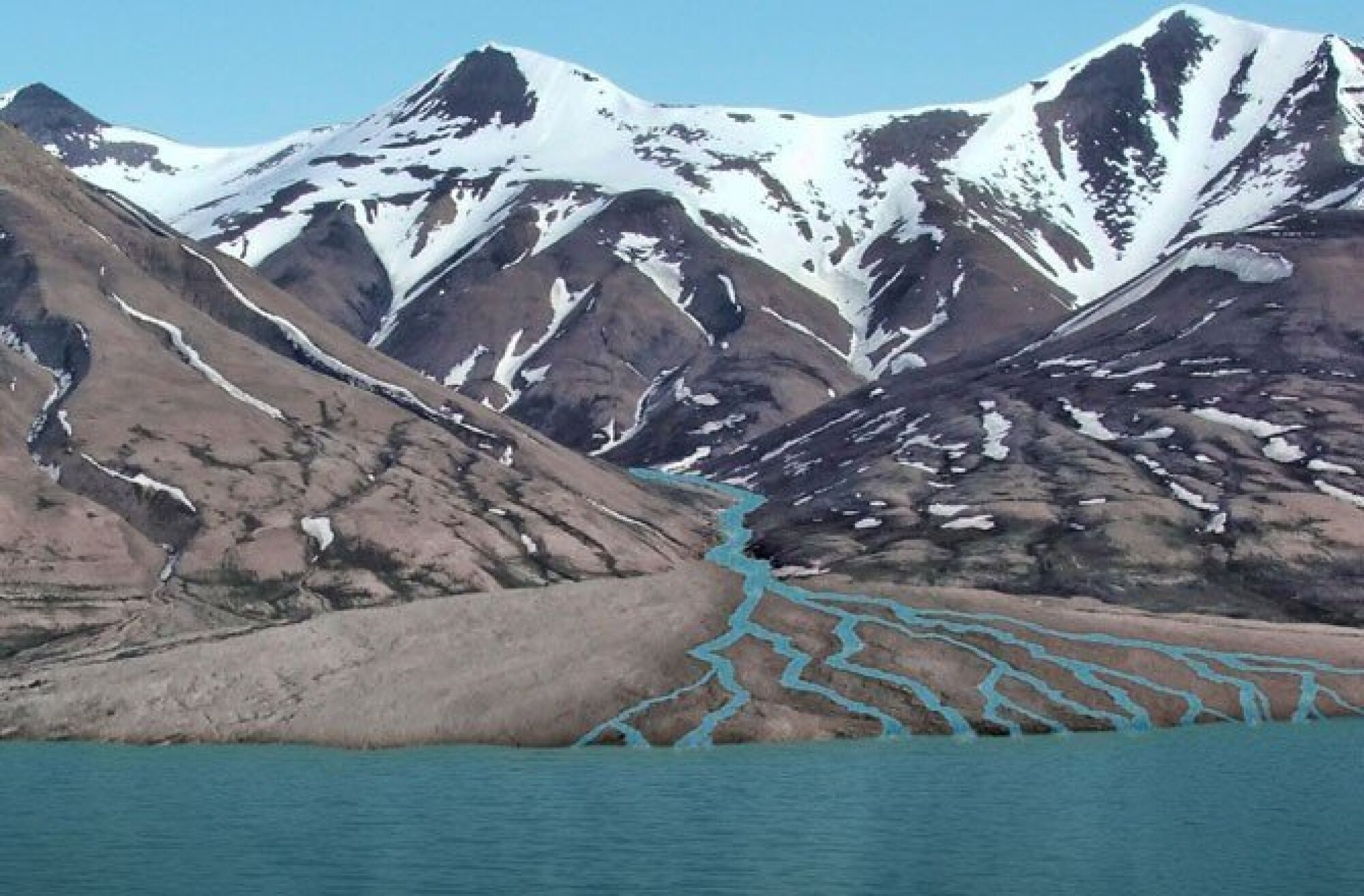
Scientists have sought life on Mars since the first spacecraft touched down on its surface in 1976. Mounting evidence from robotic explorers, especially from Curiosity and its twin Perseverance, has shown the Red Planet to have once been warmer and wetter, perhaps more than 3 billion years ago.
The rover pair had a highly productive summer, including Perseverance's discovery of a spotted rock with the most compelling signs of ancient dead Martian life yet, though a sample would need to be shipped back to Earth for confirmation. A research team also recently published more evidence of a vast ocean of water below the planet’s surface. And where there's water on Earth, there's often life.
Scientists are interested in Mars' carbon-rich rocks because they are like climate time capsules. Their minerals can hold onto clues about the environments in which they formed, such as the temperature and acidity of the water, and the ingredients within the water and air. Curiosity made the isotope measurements by heating the samples to over 1,600 degrees Fahrenheit and analyzing the released gasses.
Isotopes are versions of an element with different masses. As water evaporates, light versions of carbon and oxygen are more likely to escape into the atmosphere, while heavier versions tend to remain and get incorporated into rocks.
The isotope values of the sampled materials indicate lots of evaporation, the team says, suggesting that they probably formed in a climate that could only support transient liquid water — that is, water that comes from melted ice when temperatures rise and the surface pressure is right.
The heavy isotope values in the samples are much higher than what’s seen on Earth for carbonate minerals. Furthermore, they are the heaviest carbon and oxygen isotope values recorded for any Martian materials. Although evaporation can cause oxygen isotope changes on Earth, the changes measured in the Martian samples were two to three times greater, Burtt said.
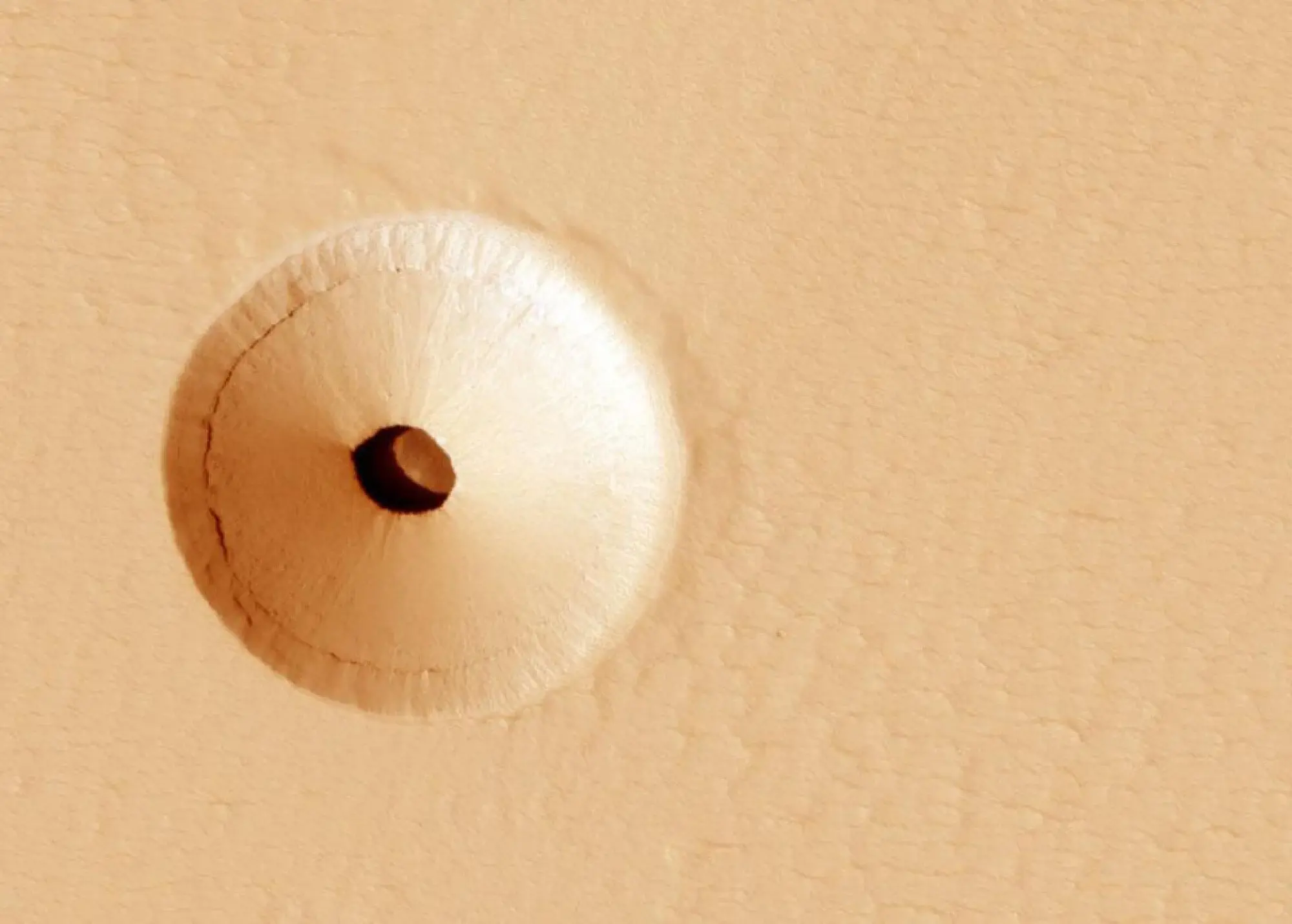
"The fact that these carbon and oxygen isotope values are higher than anything else measured on Earth or Mars points towards a process (or processes) being taken to an extreme," he said.
But this doesn't discount the possibility of life. The Red Planet appears to have a network of deep caves formed by ancient volcanic vents. Within them could be liquid water, traces of long-deceased bacteria or fungi, or, some scientists believe, perhaps even existing microbial life.
Caves can host complex ecosystems, inhabited by extremophiles that munch on rocks and convert the material into energy for life. Because of this, many astrobiologists want nothing more than to go spelunking on Mars.
Topics NASA
